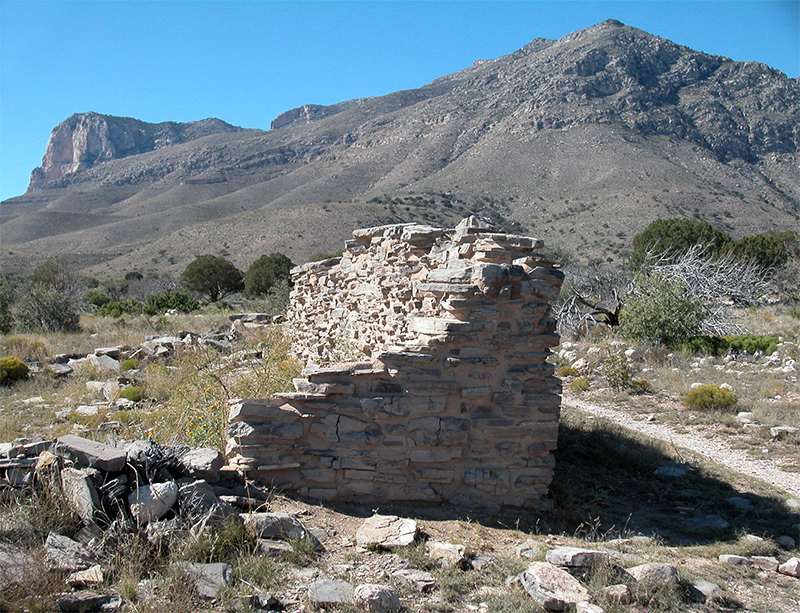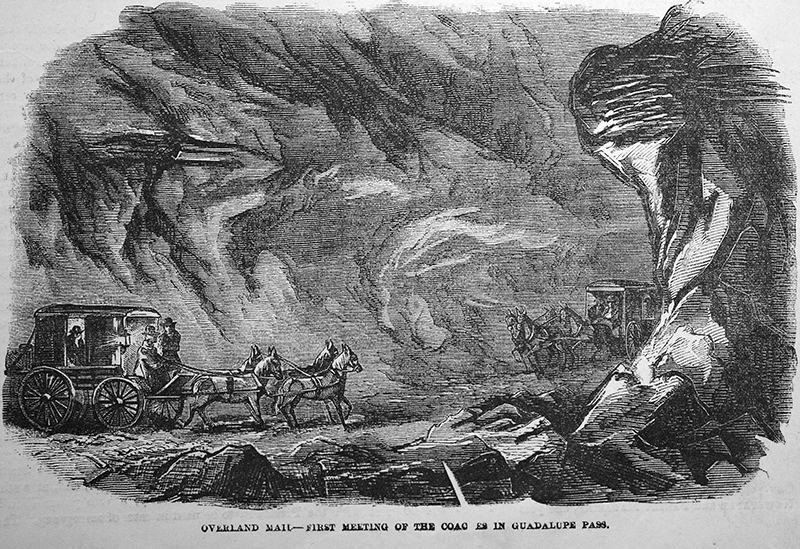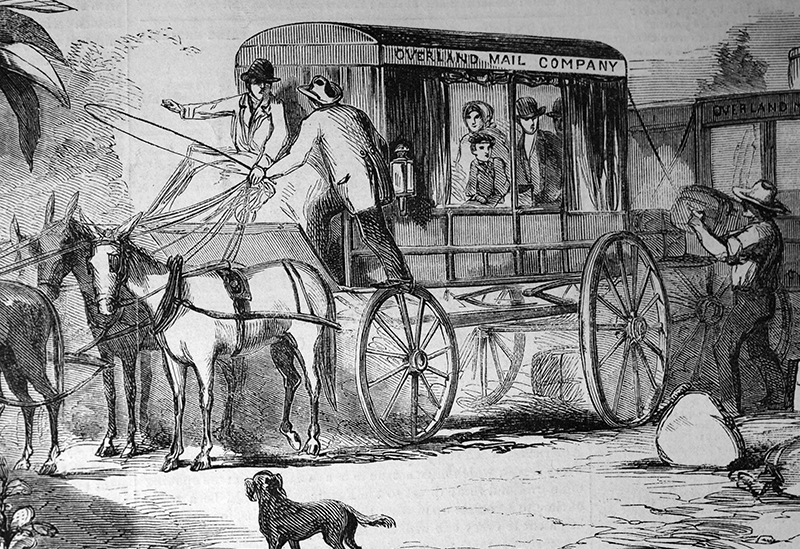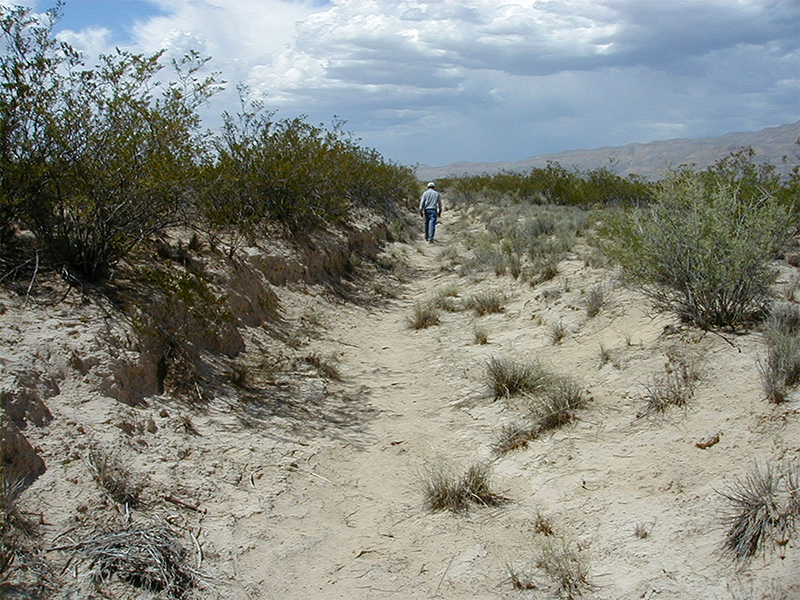When America’s first transcontinental mail service, running from Missouri to California, commenced operations in September of 1858, the event ushered in a new era in the nation’s history. For the first time, East was now linked to West, via the Butterfield Overland Mail, which ran from Tipton, Missouri to San Francisco.
The trip took just over three weeks, and the stagecoach averaged approximately six miles per hour. Stage stations were built every 15-20 miles. At relay stations jaded mules were changed out for fresh teams, while at meal stations passengers obtained meals of varying quality and a chance to stretch their legs.
In many regions of the western United States, including Texas, these mail stations were the first permanent structures, and as such served as the vanguard of settlement on the frontier.
Guadalupe Mountains National Park is blessed to have the substantial ruins of one these Butterfield stage stops, The Pinery, within its boundary. Four other stations, Delaware Springs, Crow Springs, Cornudas, and Alamo Springs are located nearby. In addition, park visitors can explore excellent surviving traces of the old Butterfield road that wrap around the base of El Capitan, out into the Salt Flats and up to the New Mexico state line.
In Guadalupe Canyon, there are still remnants of rock retaining walls dating from 1858 lining both sides of the road as it snakes its way down the canyon. Today, those who venture down the canyon can see the headstone of U.S. Army guide Jose Maria Polancio, who served under Captain James Longstreet. Indians ambushed Polancio in this canyon in February 1855. The soldiers who found Polancio wrapped him in a buffalo robe and buried him. The Indians later returned, dug up the interred guide, stole his buffalo robe and proceeded to shoot his body full of arrows a second time.



Watch a sample video clip from our documentary
A History of The Guadalupe Mountains and Carlsbad Caverns
At the bottom of Guadalupe Canyon, the Butterfield road turns to the northwest, exiting the Patterson Hills before heading out across the lunar landscape of the Salt Lakes. Fine traces of the road can be seen at the edge of the Pattersons near the Williams Ranch House and also out on the Salt Flats, heading up to the New Mexico line. Some of the road’s ruts are quite deep as it runs through the dazzling white gypsum beds and sand dunes that make up much of the Guadalupes’ west side. For hundreds of years, man has come to these saline lakes to gather the encrusted salt that forms here. A bloody war was fought over these vast salt deposits in 1877, and in the early decades of the twentieth century there was a salt processing operation nearby.
The Butterfield road leaves the sand dunes and continues up to the New Mexico-Texas state line, where the now-dry Crow Springs is located. At one time there was plenty of water here (though it was almost unpalatable because of its gyppy taste) and even a big lake. There was a stage station near the lake built of gypsum blocks. Indians once besieged this station for several days. The two men inside put stuffed dummies in chairs in front of the windows and left their dog Shep on guard while they slipped out under cover of night.
Soldiers found the dog alive a week later, still guarding the dummies. The exact location of the Crow Springs stage stop was lost to time until December 2002, when it was finally located. Visitors standing here at sunset, on the western edge of the Salt Flats looking back towards the Guadalupe Mountains, will experience an incredible panorama they will not soon forget.
If you would like to learn more about Guadalupe Mountains National Park and its wonderful, vibrant history, click on the link here to watch a clip from our documentary on the Guadalupes. This video, available on DVD or VHS, is available for purchase along with our other many Texas History videos, at our online secure-site store. Remember to browse our previous Texas History features, which are located on our History Archives page, and check back with us frequently for new and fascinating Texas History features from the experts on Texas History, www.texashistory.com.



